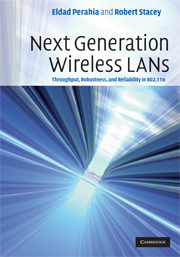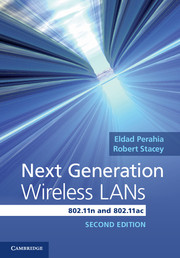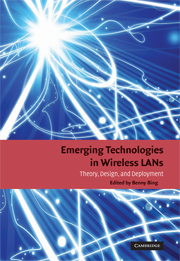Next Generation Wireless LANs
This exciting and comprehensive overview describes the underlying principles, implementation details, and key enhancing features of the new IEEE 802.11n standard, which has been created to significantly improve network throughput. A detailed discussion of important strength and reliability enhancing features is given in addition to a clear summary of any issues. Advanced topics are also covered. With numerous examples and simulation results included to highlight the benefits of the new features, this is an ideal reference for designers of Wireless Local Area Network (LAN) equipment, and network managers whose systems adopt the new standard. It is also a useful distillation of 802.11n technology for graduate students and researchers in the field of wireless communication.
- Brings you quickly up to speed on 802.11n without having to wade through the entire standard
- Provides explanations as to how/why certain features were adopted
- Includes numerous MAC and physical layers examples, and simulation results
Reviews & endorsements
'Books like this one are invaluable because they provide the details and the background that allow readers to answer the questions, 'What is likely to be in the final standard and how does it work?' Eldad and Robert should be congratulated on taking up the challenge.' Andrew Myles, Chairman of Wi-Fi Alliance
Product details
November 2008Adobe eBook Reader
9780511433917
0 pages
0kg
85 tables
This ISBN is for an eBook version which is distributed on our behalf by a third party.
Table of Contents
- Preface
- Foreword
- 1. Introduction
- Part I. Physical layer:
- 2. Orthogonal frequency division multiplexing
- 3. MIMO/SDM basics
- 4. PHY interoperability with 11a/g legacy OFDM devices
- 5. High throughput
- 6. Robust performance
- Part II. Media access control layer:
- 7. Media access control
- 8. MAC throughput enhancements
- 9. Advanced channel access techniques
- 10. Interoperability and coexistence
- 11. MAC frame formats
- Part III. Transmit beamforming:
- 12. Transmit beamforming
- Acronyms
- Index.






